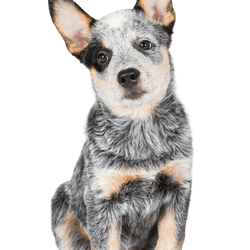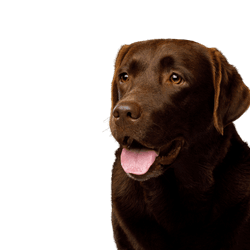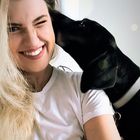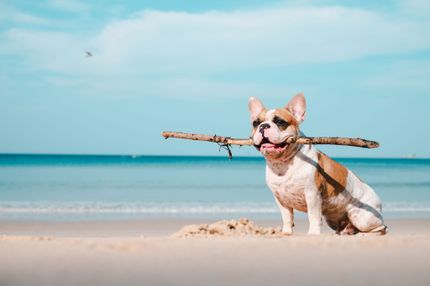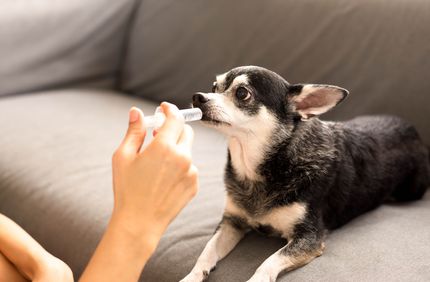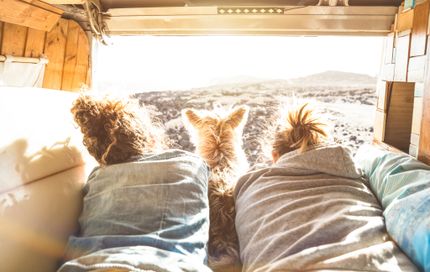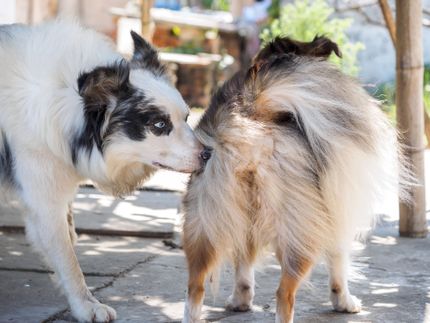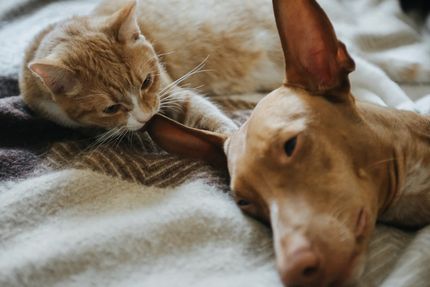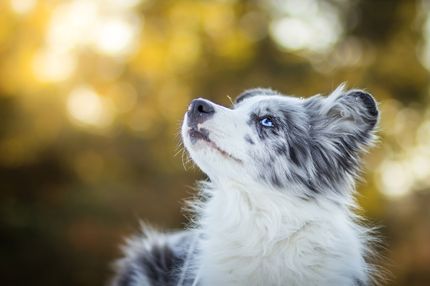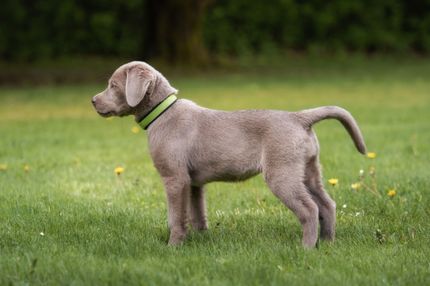Facts & Origin
What is a Labraheeler - origin and origins
The Labraheeler is a so-called designer dog or hybrid breed that is the result of the deliberate crossing of two very different but popular dog breeds: the Labrador Retriever and the Australian Cattle Dog (also known as the Blue Heeler or Queensland Heeler). The aim of this mating is to create an intelligent, loyal and active companion dog that is suitable for both sporting families and dog-savvy individuals.
As the Labraheeler is not officially recognized as a separate breed, it is a mix with sometimes unpredictable characteristics in terms of both appearance and temperament. The breeding of this crossbreed is particularly widespread in the USA and Australia, but is also slowly gaining interest in Europe - especially among people who want a dog that is eager to move, willing to work and adaptable.
Synonyms for Labraheeler
As the Labraheeler is not a standardized breed, there are various terms and descriptions by which this mix is known. Common synonyms and alternative names include
Labrador x Heeler
Labrador-cattle-dog mix
Australian Cattle Dog Labrador Retriever Mix
Cattle-Lab mix
Criticism of hybrid breeds - justified concerns
As with many other designer dogs, the Labraheeler is also subject to criticism of hybrid breeds. Critics point out that many such crosses are made without long-term breeding planning or health precautions - often by hobby breeders who want to follow the trend.
Another problem is the unpredictability of the characteristics: While certain traits and characteristics have been consolidated over generations in purebred dogs, crossbreeds such as the Labraheeler can have both the balanced, friendly nature of the Labrador and the stubborn, reactive will to work of the Heeler - or a completely individual mixture of both.
Anyone choosing a Labraheeler should be aware of the responsibility and challenge that comes with such an energetic and intelligent dog - and not rely solely on the external appeal of a "modern hybrid breed".
| Alternate Name | Cattle-Lab-Mix, Labrador-Cattle-Dog-Mix |
| Origin | Australia - UK |
| Life expectancy | 10 - 14 years |
| Care requirements | low-maintenance |
| Activity level | average |
| FCI group | not recognised |
| AKC group | not recognised |
| KC group | not recognised |
More Australian Cattle Dog mixes
More Labrador Retriever mixes
Attitude, character and temperament of the breed
Character traits - smart, eager to work, but not for everyone
The Labraheeler is generally a highly intelligent, active and loyal dog that forms a close bond with its owner. Many representatives of this crossbreed are very attentive, easy to motivate and willing to learn, which makes them excellent candidates for dog sports such as agility, obedience or mantrailing.
At the same time, the Labraheeler is not for beginners. The influence of the Australian Cattle Dog often brings with it a portion of independence, territorial behavior and herding instinct. Some Labraheelers also show a pronounced "Heelen " - the driving by nipping at the heels, which is typical of the Heeler. These dogs need:
Mental exercise and daily activity
Consistent but sensitive training
Clear structures and rules
Close social integration - a Labraheeler wants to be there, not "running alongside"
With sufficient guidance, exercise and socialization, the Labraheeler can be a fantastic family dog - but only if you do it justice.
Character
Care and possible diseases
The Labraheeler is usually easy to care for. The coat is usually short to medium-length, dense and weather-resistant, often with a light undercoat. Regular brushing once a week is usually sufficient, more often during the shedding season. The ears should be checked regularly, as both breeds of origin are prone to ear infections if the ears are not kept clean.
Possible hereditary health risks in the Labraheeler are
Hip dysplasia (HD)
Elbow dysplasia (ED)
Eye diseases such as progressive retinal atrophy (PRA)
Allergies or skin problems
Deafness, especially in puppies with a lot of white in their coat (inherited from the Heeler)
A reputable breeder should therefore have both parents tested for relevant hereditary diseases and document this transparently.
Possible appearance - from robust to sporty and slim
The Labrador is quite diverse in its appearance, as it combines two very different breeds. Many dogs have a robust, muscular build reminiscent of the Cattle Dog, combined with the somewhat softer, friendly facial expressions of the Labrador. Others are more similar to the Labrador in build and head shape, but have the characteristic coat colors and markings of the Heeler.
Typical characteristics can be
Short to medium-length, dense coat
Colors: Black, brown, cream, blue speckled, often with white markings or "marbling"
Upright or half-tipped ears
Intense eye color, usually brown or amber
Medium to large stature, usually weighing 20-30 kg and 45-60 cm high
The appearance varies greatly from dog to dog - as with other hybrid breeds, much depends on which genes prevail.
| Fur length | short |
| Fur | - flat coated |
| Ear shape | Standing Ears - Triangle |
| Tail | fanned out - lang |
| Anatomy | rugged, rugged, massive |
| Size ♀ | 43 - 60 cm |
| Weight ♀ | 14 - 32 kg |
| Size ♂ | 46 - 63 cm |
| Weight ♂ | 15 - 32 kg |
| Suitable For | - |
Known Diseases
Numbness
Often occurs in old age.
Nervous disorders
Nervous disorders are manifested, for example, by disturbances in perception, neurological abnormalities such as tremors, apathy, convulsions, paralysis, tilting of the head, uncontrolled urination and defecation, and behavioural abnormalities.
Eye infections
Chronic eye infections can be very painful in dogs and can be treated with medication. In rare cases, the cornea must be treated.
Hip dysplasia (HD)
Hip dysplasia (HD) is a genetic condition in dogs where the hip joint is not shaped properly. This leads to pain, stiffness and restricted movement.
Elbow dysplasia (ED)
Elbow joint dysplasia is a chronic disease complex of the elbow joint of fast growing dog breeds.
Eye diseases
Often occur with allergies and intolerances.
Overweight
Often, unfortunately, the dogs very much under excess weight. But the dogs themselves are never to blame!
Joint damage
In some breeds, joint damage can occur later in life, affecting the musculoskeletal system.
FAQ
-
A Labraheeler is a cross between two popular dog breeds, the Labrador Retriever and the Australian Cattle Dog. These two breeds were chosen for their compatibility with each other and their ability to produce a healthy, versatile dog.
-
A Labraheeler, as they are sometimes called, can vary greatly in appearance. However, most have the characteristic short, dense coat of the Labrador Retriever and the head and body shape of the Australian Cattle Dog.
-
Labradors are generally active, friendly and intelligent dogs. They make excellent family pets and are known to be good with children.
-
Labradors need the same care as any other dog. They should be fed high-quality food, get plenty of exercise and receive regular veterinary examinations and vaccinations.
-
Yes, Labrador Retriever and Australian Cattle Dog mixes are great family dogs. They generally get on well with children and other pets and are relatively easy to train.
